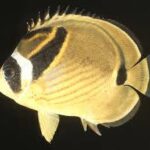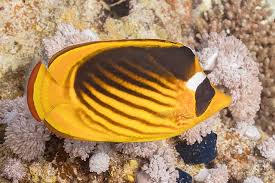Rosa glauca, admired for its ornamental foliage and vibrant blooms, is susceptible to various pests and diseases that can affect its health and appearance. This section examines the common pests and diseases that afflict Rosa glauca and outlines effective strategies for prevention and management.

1. Common Pests
Aphids (Aphidoidea):
- Identification: These small, soft-bodied insects cluster on new growth, feeding on plant sap and excreting honeydew, which can attract ants and promote fungal growth.
- Damage: Aphid infestations can cause stunted growth, distorted leaves, and reduced flowering.
- Control: Control aphids by regularly inspecting plants, spraying with a strong stream of water to dislodge them, or using insecticidal soap as a natural remedy.
Spider Mites (Tetranychidae):
- Identification: These tiny arachnids feed on plant sap, causing stippling (yellow speckling) on leaves and fine webbing on affected parts.
- Damage: Severe infestations weaken plants, leading to leaf drop and reduced vigor.
- Control: Increase humidity around plants to discourage spider mites, prune infested branches, and apply miticides as needed following label instructions.
Rose Sawfly Larvae (Arge rosae):
- Identification: These green caterpillar-like larvae feed on rose foliage, skeletonizing leaves and causing significant defoliation if left unchecked.
- Damage: Severe infestations can weaken plants and reduce their aesthetic appeal.
- Control: Handpick larvae from plants, encourage natural predators like birds and beneficial insects, and apply biological insecticides if necessary.
2. Common Diseases
Powdery Mildew (Erysiphales):
- Symptoms: White powdery patches develop on leaves and stems, often in humid conditions with poor air circulation.
- Damage: Mildew-infected foliage can become distorted, withered, and prone to premature leaf drop.
- Control: Improve air circulation around plants, avoid overhead watering, prune affected plant parts, and apply fungicidal sprays containing sulfur or potassium bicarbonate.
Black Spot (Diplocarpon rosae):
- Symptoms: Circular black spots with fringed margins appear on leaves, which may yellow and prematurely drop.
- Damage: Severe infections weaken plants, reduce flower production, and compromise overall plant health.
- Control: Remove infected leaves promptly, improve air circulation, avoid overhead watering, and apply fungicidal sprays containing chlorothalonil or neem oil.
Rose Rust (Phragmidium spp.):
- Symptoms: Orange-red pustules develop on leaf undersides, causing yellowing, distortion, and premature leaf drop.
- Damage: Rust-infected plants may lose vigor and bloom less profusely.
- Control: Remove infected leaves, improve air circulation, and apply fungicidal sprays labeled for rust control during the growing season.
3. Integrated Pest Management (IPM) Strategies
Cultural Practices:
- Plant Selection: Choose disease-resistant Rosa glauca varieties when possible.
- Sanitation: Remove and dispose of fallen leaves and debris to reduce overwintering pests and disease spores.
- Pruning: Prune regularly to improve air circulation and reduce disease incidence.
Biological Controls:
- Natural Predators: Encourage beneficial insects like ladybugs and lacewings that prey on aphids and other pests.
- Microbial Insecticides: Use products containing beneficial fungi or bacteria to control pest populations without harming beneficial organisms.
4. Organic and Chemical Controls
Organic Options:
- Neem Oil: Effective against aphids, spider mites, and some fungal diseases.
- Insecticidal Soap: Controls soft-bodied insects like aphids and spider mites on contact.
- Sulfur Sprays: Prevents and controls fungal diseases like powdery mildew and rust.
Chemical Options:
- Synthetic Insecticides: Use as a last resort and follow label instructions carefully to minimize environmental impact.
- Fungicides: Apply as preventive measures or at the first signs of disease outbreak, rotating active ingredients to reduce resistance buildup.
5. Monitoring and Early Intervention
Regularly monitor Rosa glauca plants for signs of pests and diseases, implementing control measures promptly to prevent spread and minimize damage. Early intervention enhances plant health and reduces the need for intensive treatments later in the growing season.
Conclusion
Effective pest and disease management practices are essential for maintaining the health and beauty of Rosa glauca in gardens and landscapes. By implementing integrated pest management strategies, including cultural practices, biological controls, and selective use of organic or chemical treatments, gardeners can protect Rosa glauca from common threats while promoting sustainable gardening practices.









